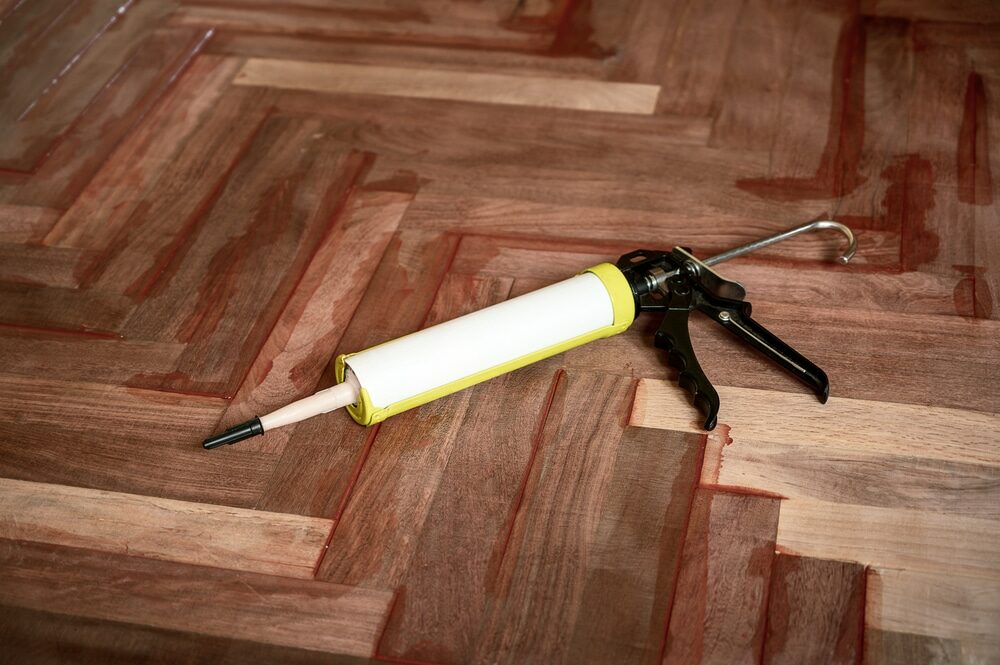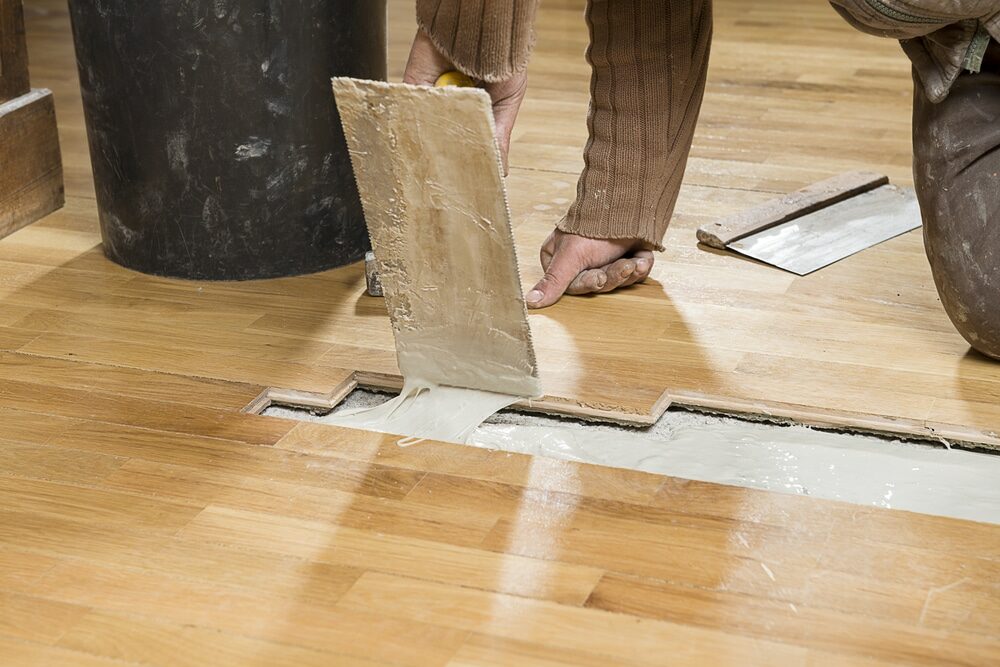London:
Nationwide:
Buffing for Engineered Wood Flooring: Techniques and Tools
Posted on January 1, 2024
Buffing
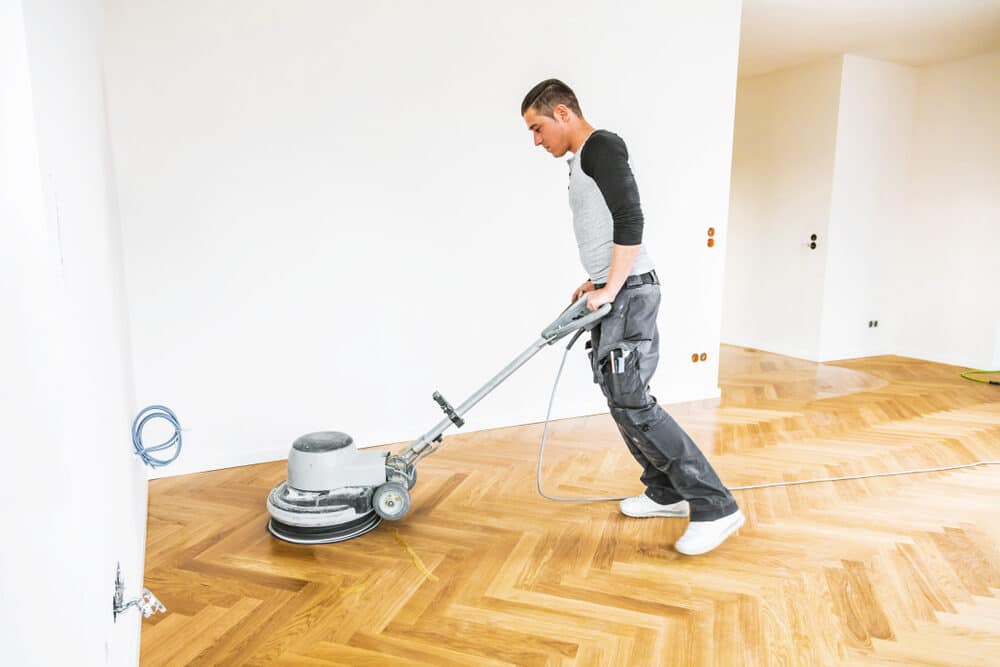
Caring for Engineered Wood Floors: Buffing Techniques and Tools
Engineered wood flooring is a popular choice for homeowners due to its durability, versatility, and natural wood aesthetics. However, like any type of flooring, engineered wood floors requires regular maintenance to keep it looking its best. One essential maintenance task for engineered wood flooring is buffing.
Floor Buffing not only restores the shine and lustre of your flooring but also helps to extend its lifespan. Whether you’re a seasoned DIY enthusiast or new to the world of floor care, this guide will walk you through the techniques and tools necessary for successful buffing.
In this comprehensive blog post, we’ll explore the importance of buffing engineered wood flooring and the numerous benefits it offers. We’ll delve into the preparation steps, including gathering the right tools and ensuring your work environment is ready. You’ll also learn about the various types of buffing machines and pads available, enabling you to make informed choices for your specific needs.
Safety is a top priority when it comes to any home improvement project, so we’ll cover the necessary precautions and protective measures you should take before starting the buffing process.
The heart of this guide lies in the step-by-step instructions for buffing your engineered wood flooring. We’ll provide tips and techniques for achieving a beautiful and long-lasting finish, as well as guidance on dealing with stubborn stains or imperfections.
Maintenance doesn’t end with the flooring itself; it extends to your buffing machine. We’ll offer insights into cleaning and maintaining your buffing equipment, along with troubleshooting advice for common issues that may arise during the process.
Let’s dive into the world of buffing for engineered wood flooring, equipping you with the knowledge and skills needed to maintain and enhance the beauty of your floors.
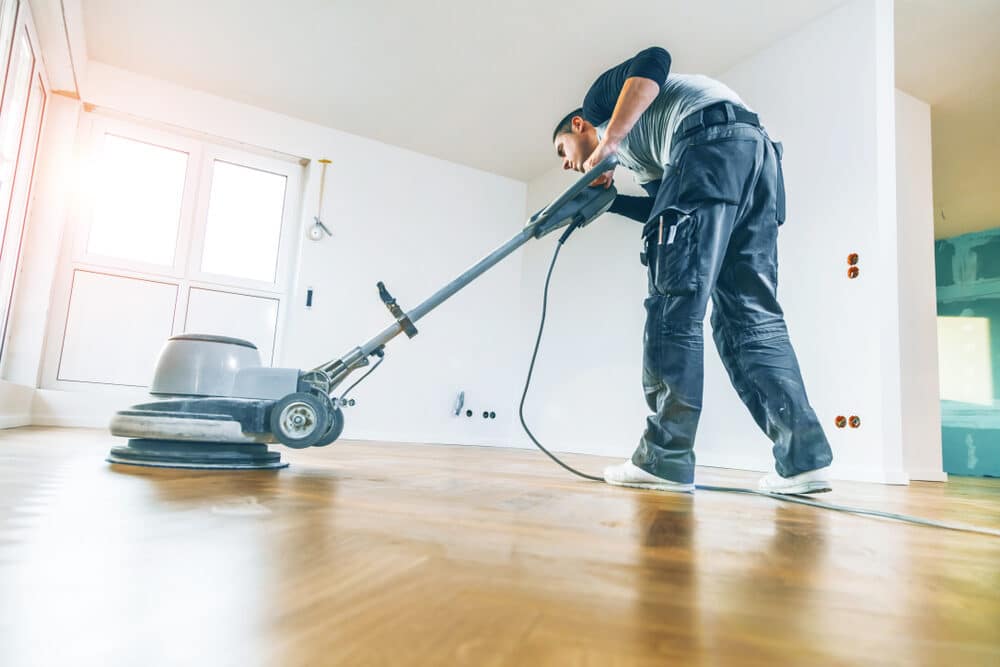
Preparation
Before you start buffing your engineered wood flooring, it’s crucial to ensure that you’ve taken the necessary preparatory steps. Proper preparation sets the stage for a successful and efficient buffing process. Here’s what you need to do:
1. Gathering Necessary Tools and Materials:
- Buffing Machine: Make sure you have the appropriate buffing machine for your flooring. Consider factors like the type of machine, size, and speed settings.
- Buffing Pads: Select the right buffing pads based on your flooring’s condition and the finish you want to achieve.
- Cleaning Supplies: Gather cleaning solutions, a mop or microfiber cloth, and a vacuum cleaner to prepare the flooring surface.
- Safety Gear: Don’t forget essential safety equipment like safety goggles, hearing protection, and a dust mask.
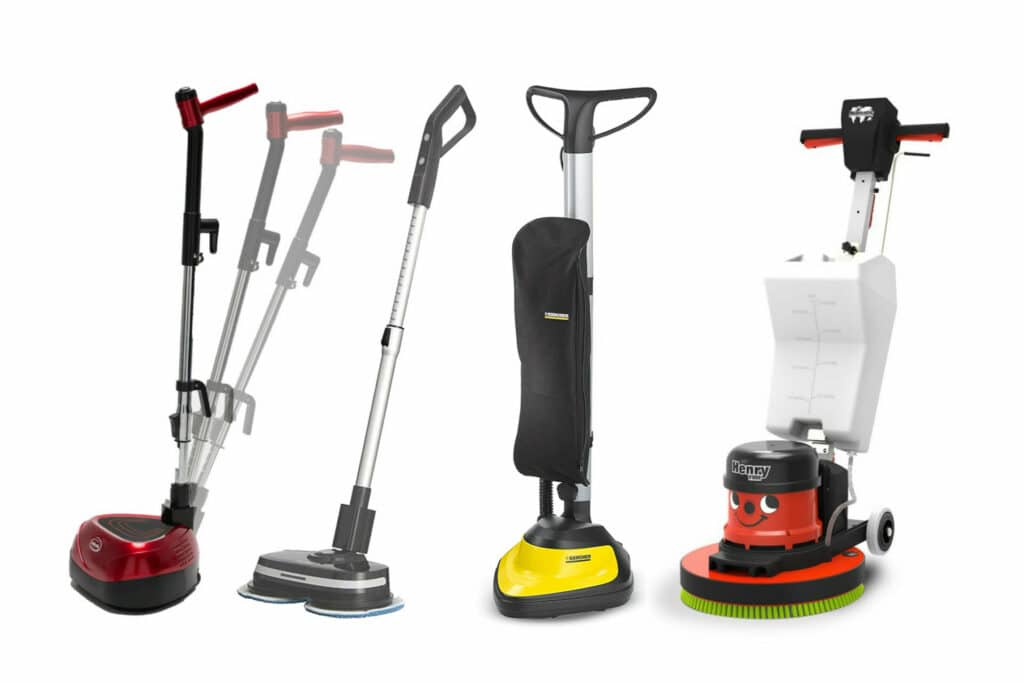
2. Clearing the room:
- Remove all furniture and obstacles from the room where you’ll be buffing. This ensures an unobstructed workspace and prevents potential damage to your belongings.
- If there are any nails or protruding objects on the floor, address them to avoid damaging the buffing machine or pads.
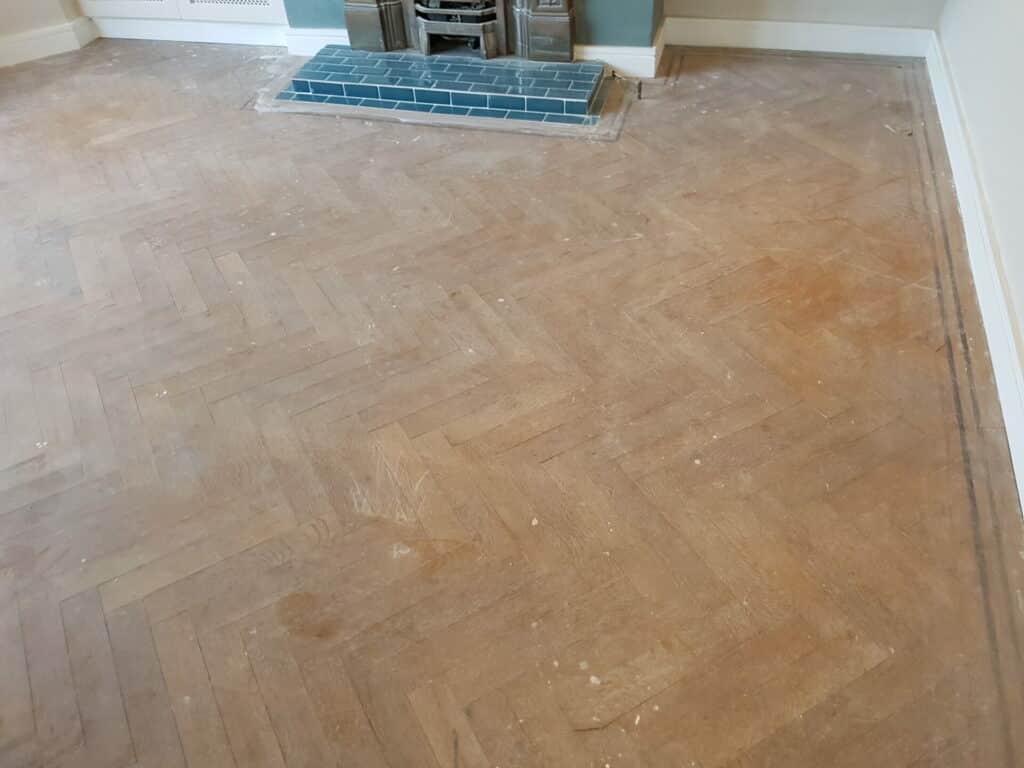
3. Inspecting the Flooring Surface:
- Examine the engineered wood flooring closely. Look for any deep scratches, stains, or imperfections that may require special attention during the buffing process.
- If there are significant issues, like deep scratches or gouges, you may need to consider sanding or refinishing the flooring before buffing.
Choosing the Right Buffing Machine
Selecting the appropriate buffing machine for your engineered wood flooring is a crucial step in achieving the best results. There are various types of buffing machines available, each with its own features and advantages. Consider the following factors when choosing the right machine for your needs:
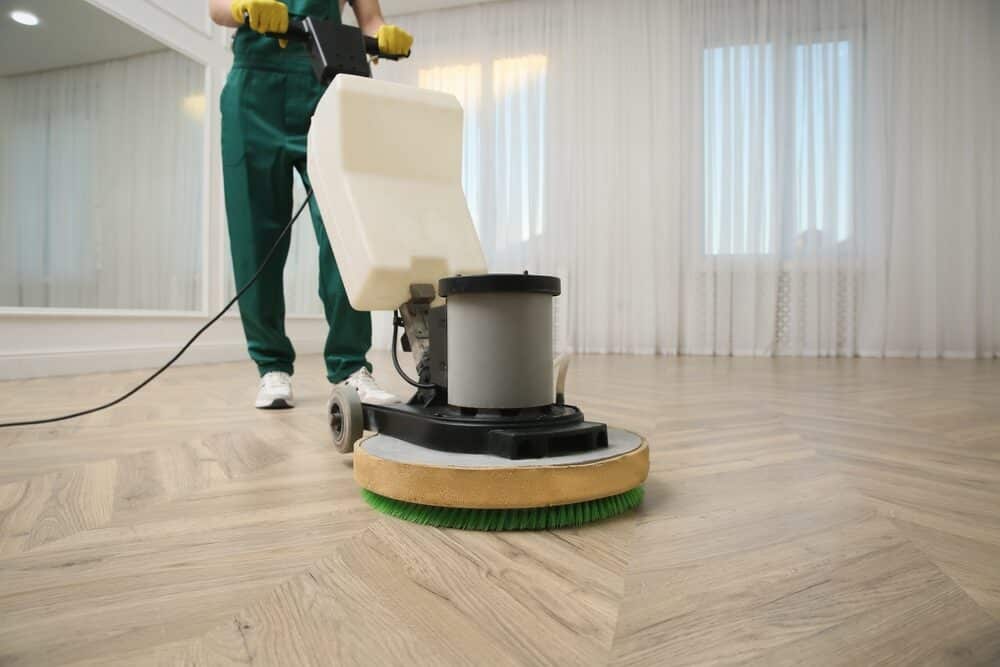
Machine Types:
- Orbital Buffer: Ideal for light to moderate buffing and polishing tasks. It’s user-friendly and less likely to cause swirl marks or damage to the flooring.
- Rotary Buffer: A more powerful machine suitable for heavy-duty buffing and restoration work. It can handle deep scratches and imperfections but requires more skill to operate without causing damage.
Size and weight:
- Smaller, lightweight machines are easier to manoeuvre and are suitable for smaller spaces or DIY projects.
- Larger, heavier machines are better for larger areas but may require more physical effort to operate.
Speed Settings:
- Look for a buffing machine with adjustable speed settings. Different tasks, such as cleaning, buffing, or polishing, may require different speeds.
- Lower speeds are suitable for delicate or intricate work, while higher speeds are better for heavier buffing tasks.
Power Source:
- Buffing machines can be electric, battery-powered, or pneumatic (air-powered). Choose one that suits your available power source and mobility requirements.
Pad Compatibility:
- Ensure the machine you choose is compatible with the type and size of buffing pads you intend to use.
Noise Level:
- Consider the noise level of the machine, especially if you’re working in a residential area. Some models are quieter than others.
Brand and quality:
- Research reputable brands known for producing reliable and durable buffing machines. Quality equipment can make a significant difference in the outcome.
Budget:
- Determine your budget and try to find a machine that meets your needs within that budget. Keep in mind that investing in a higher-quality machine can pay off in the long run.
Reviews and recommendations:
- Read reviews from users who have experience with the specific machine you’re considering. Recommendations from professionals or experts in the field can also be valuable.
Warranty and Support:
- Check if the machine comes with a warranty and if the manufacturer provides good customer support and service.
Selecting Buffing Pads
Choosing the right buffing pads for your engineered wood flooring is essential for achieving the desired finish and avoiding damage. Buffing pads come in various types, each designed for specific purposes. Here’s how to select the appropriate buffing pads:
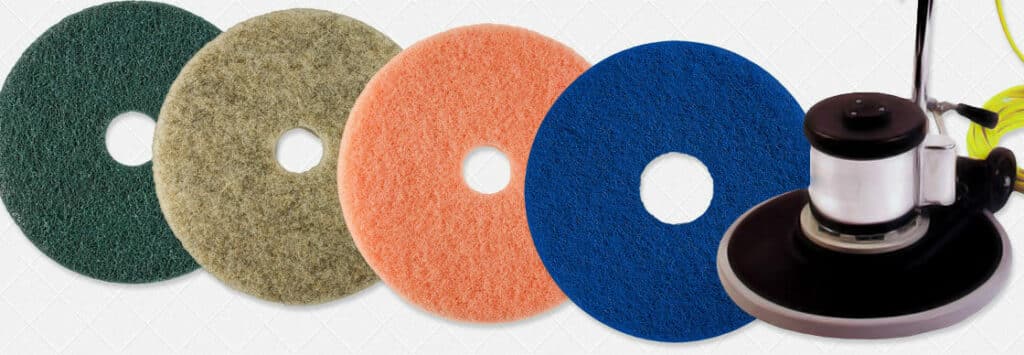
Determine your goal:
- Identify the outcome you want to achieve. Are you aiming for a high-gloss shine, light polishing, or simply removing surface dirt and scuffs? Your goal will influence your pad selection.
Pad Types:
- Polishing Pads: These are designed to enhance the shine of your flooring. They are typically softer and produce a glossy finish. Use them for regular maintenance and to restore the floor’s lustre.
- Buffing Pads: These pads are versatile and can handle light to moderate buffing and cleaning tasks. They are suitable for routine maintenance and can remove minor surface imperfections.
- Scrubbing Pads: Use scrubbing pads for more aggressive cleaning. They are capable of removing stubborn stains, dirt, and grime but are less gentle on the finish.
- Stripping Pads: Reserved for heavy-duty tasks, stripping pads are designed to remove old finishes, wax, or coatings. They are not typically used for routine maintenance.

Pad Materials:
- Buffing pads come in various materials, including foam, microfiber, and natural fibres like lambswool.
- Foam pads are commonly used for polishing and buffing. They are gentle and can achieve a high shine.
- Microfiber pads are effective at picking up dust and polishing surfaces.
- Lambswool pads are suitable for buffing and can create a brilliant shine.
Pad Size:
- Consider the size of the buffing machine’s pad holder when selecting buffing pads. Ensure that the pads are the right size to fit your machine.
Colour Coding:
- Some manufacturers colour-code their pads to indicate their intended use. Check the manufacturer’s guidelines to understand the purpose of each colour.
Multiple-Pad Selection:
- Depending on your project, you may need to use multiple pads sequentially. For example, start with a more abrasive pad for initial cleaning and switch to a softer pad for polishing.
Compatibility with the Buffing Machine:
- Ensure that the buffing pads you choose are compatible with the type of buffing machine you have. Some machines may have specific pad requirements.
Quality and Durability:
- Invest in high-quality pads that are durable and designed for your intended use. Cheaper pads may wear out quickly or not perform as expected.
Reviews and recommendations:
- Read reviews and seek recommendations from professionals or experienced users to determine which buffing pads are well-regarded for your specific flooring type and project.
Safety Precautions
Ensuring your safety and the safety of others is paramount when buffing engineered wood flooring. This process involves power tools and potential hazards, so it’s essential to take the following safety precautions:
Wear proper safety gear:
- Safety Goggles: Protect your eyes from flying debris and dust.
- Hearing Protection: Use earplugs or earmuffs, especially when operating noisy buffing machines for extended periods.
- Dust Mask: Prevent the inhalation of dust particles and chemical fumes.
- Work Gloves: Choose gloves that provide a good grip and protect your hands from potential splinters or rough surfaces.
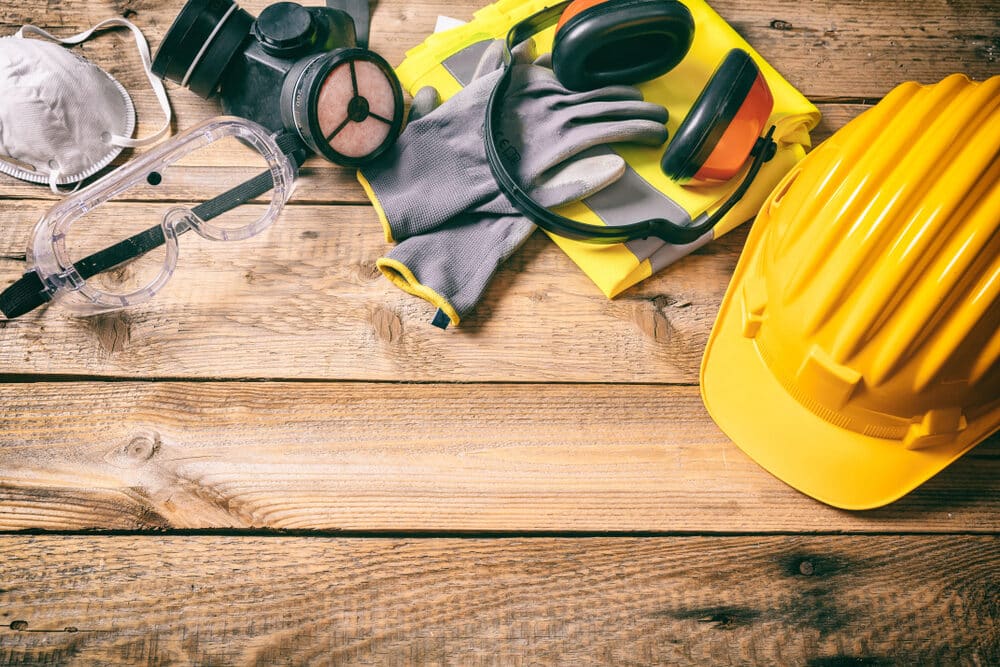
Clear the area:
- Remove all furniture, rugs, and obstacles from the room to create a safe, unobstructed workspace.
- Ensure that no one else enters the area while you’re working, especially children and pets.
Inspect Your Buffing Machine:
- Before use, check the buffing machine for any loose or damaged parts. Make sure all safety guards and handles are securely in place.
- Ensure the power cord is in good condition and properly grounded.
Secure the power source:
- If you’re using an electric buffing machine, ensure the power source is equipped with ground-fault circuit interrupters (GFCIs) to prevent electrical accidents.
Ventilation:
- Work in a well-ventilated area to minimise dust and fumes. If possible, open windows and doors for proper airflow.
- If you’re using chemical cleaning solutions, ensure adequate ventilation and follow the manufacturer’s recommendations for safe use.
Read the user manual:
- Familiarise yourself with the user manual for your buffing machine. Follow the manufacturer’s instructions for safe operation and maintenance.
Steady Stance and Balance:
- Maintain a stable and balanced stance while operating the buffing machine. Avoid overreaching or leaning too heavily on the machine.
Switch Off When Not in Use:
- Always switch off the buffing machine when you’re not actively using it, such as when changing pads or taking breaks.
Avoid loose clothing and jewellery.
- Wear fitted clothing that won’t get caught in the machine’s moving parts.
- Remove any loose jewellery that could become entangled.
Stay Alert:
- Buffing can be physically demanding. Take regular breaks to rest and refocus your attention to prevent fatigue-related accidents.
Keep electrical cords clear:
- Be mindful of the power cord while working to prevent tripping hazards. Use cord management solutions if necessary.
Emergency Preparedness:
- Have a fire extinguisher nearby and know how to use it.
- Familiarise yourself with the location of emergency exits in case of a fire or other emergency.
Chemical Safety:
- When using cleaning solutions or chemicals, follow the manufacturer’s safety instructions, including wearing appropriate protective gear.
First Aid Kit:
- Keep a well-stocked first-aid kit on hand in case of minor injuries.
Training and experience:
- If you’re new to buffing, consider seeking guidance from a professional or taking a training course to learn proper techniques and safety procedures.
Step-by-Step Buffing Process
Now that you’ve prepared your workspace and taken safety precautions, it’s time to dive into the step-by-step process of buffing your engineered wood flooring. Follow these instructions for a successful buffing session:
Prepare the blowing machine:
- Ensure the buffing machine is in good working condition and the buffing pad is securely attached.
- Set the machine to the appropriate speed based on your flooring type and the task at hand.
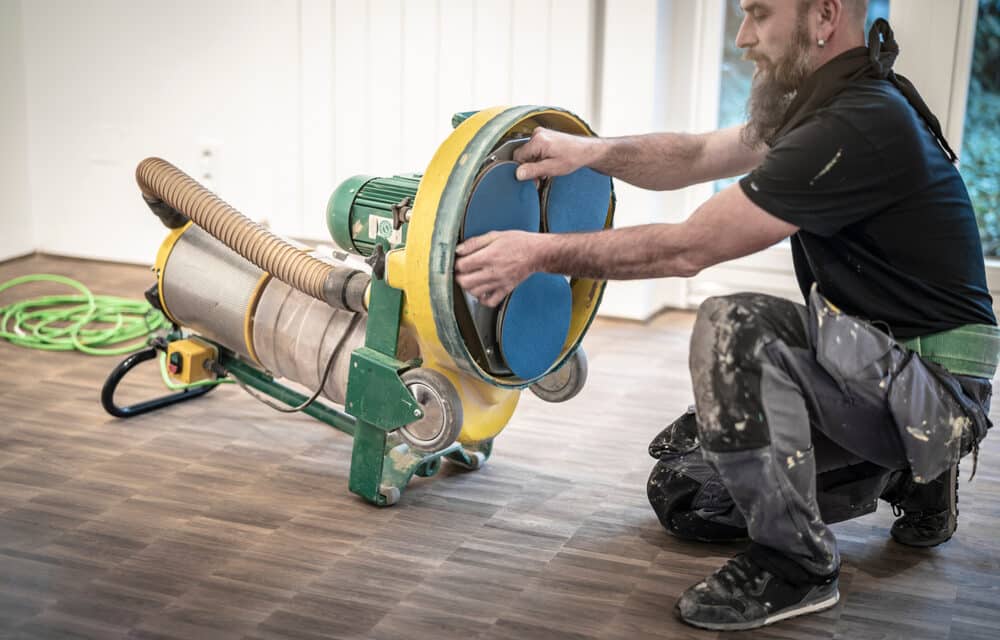
Prepare the flooring surface:
- Vacuum or sweep the entire area to remove loose dirt, dust, and debris.
- For a deeper clean, use a damp mop or microfiber cloth to clean the floor surface. Allow it to dry completely before buffing.
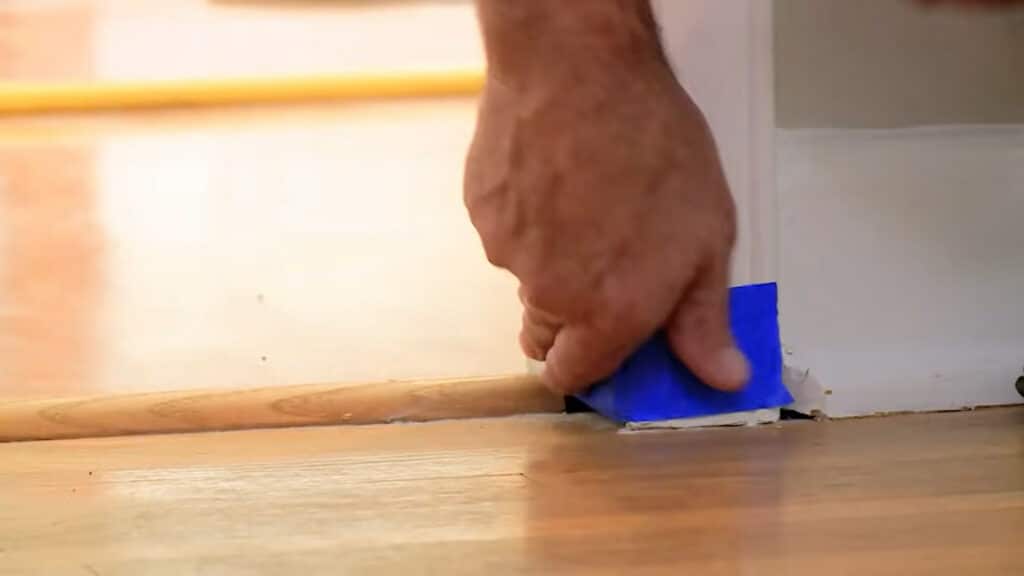
Apply Buffing Compound (Optional):
- If you want to achieve a higher shine, you can apply a buffing compound or polishing solution to the flooring. Follow the manufacturer’s instructions for the product you’re using.
Begin Buffing:
- Start in a corner of the room, preferably near the entrance, and work your way towards the opposite end of the room. This ensures you don’t trap yourself in a corner.
- Hold the buffing machine with both hands, keeping a firm grip on the handles.
- Tilt the machine slightly forward to allow the buffing pad to make full contact with the floor.

Buff in Small Sections:
- Divide the room into manageable sections, typically 4’x4′ or 5’x5′ areas.
- Work the buffing machine in a side-to-side or back-and-forth motion, overlapping each pass slightly to ensure even coverage.
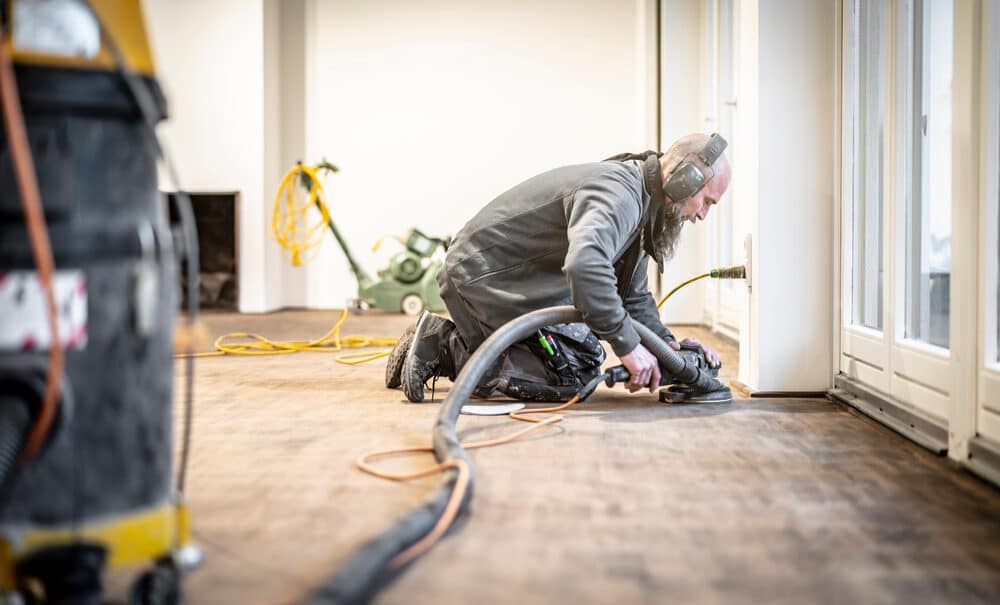
Maintain a Consistent Pace:
- Keep a steady and consistent pace as you move the machine. Moving too quickly may not yield the desired results, while moving too slowly can cause uneven buffing.
Observe the buffing pad:
- Periodically, check the condition of the buffing pad. If it becomes dirty or clogged with debris, replace it with a clean one to maintain efficiency.
Inspect Your Progress:
- Pause periodically to inspect your progress. Look for areas that may require additional attention, such as stains or scuffs.
- If you encounter stubborn stains or imperfections, you may need to use a more aggressive pad or spot-treat the area.
Continue Buffing:
- Repeat the buffing process for each section of the room until you’ve covered the entire floor surface.
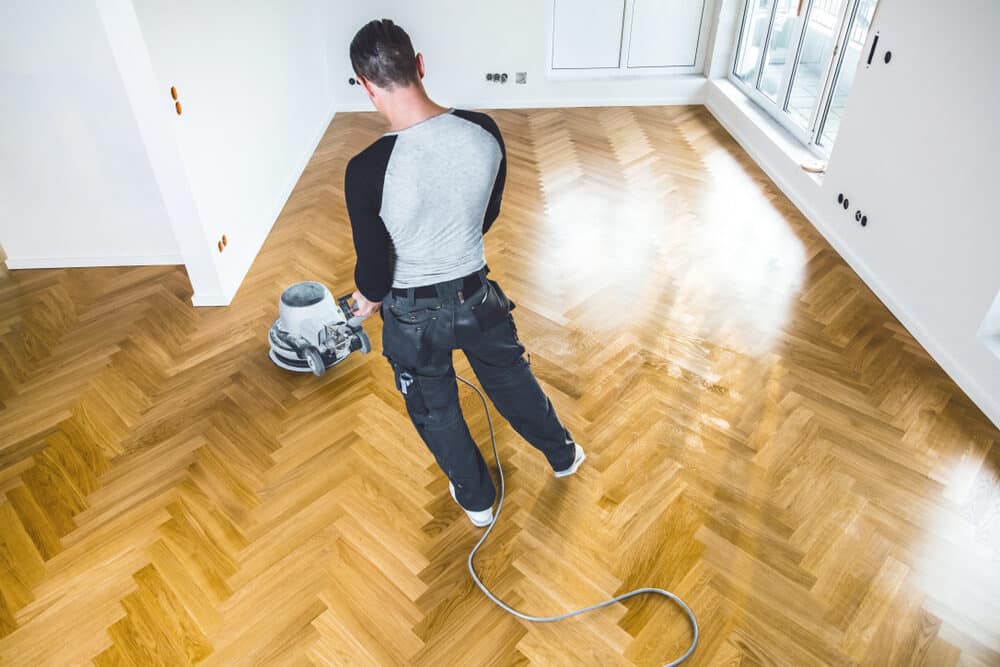
Clean the floor:
- Once you’ve completed buffing, vacuum or sweep the floor again to remove any dust or debris generated during the process.
Optional additional steps:
- If you want an even higher shine, you can follow up with a final polishing step using a clean, soft buffing pad.
- Apply a flooring finish or wax if desired, following the manufacturer’s instructions.
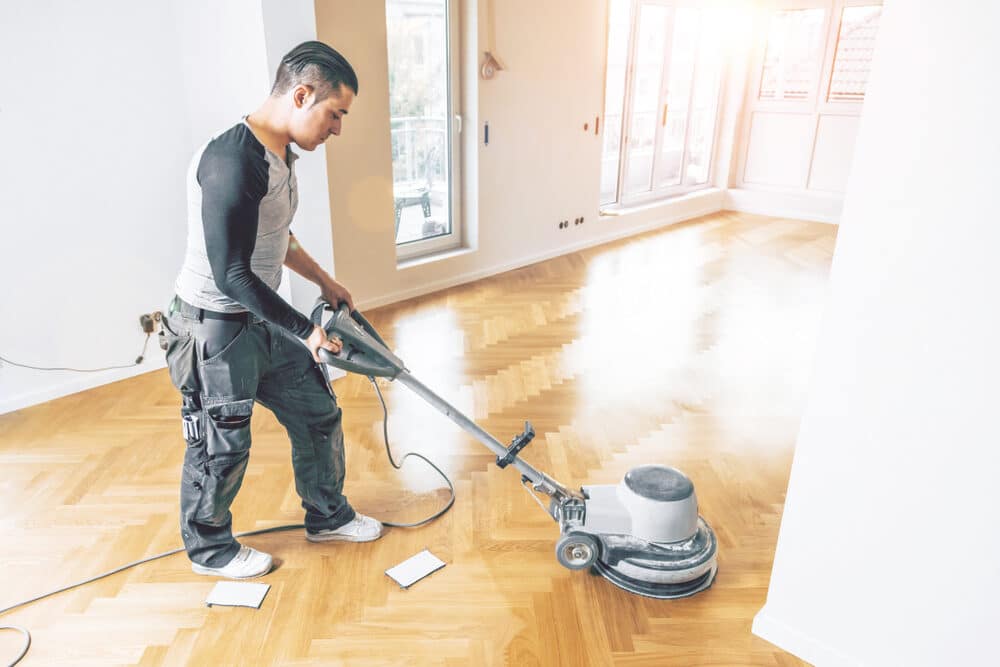
Final Inspection:
- Walk through the room and inspect your work. Ensure that the floor has an even shine and that no areas have been missed.
Clean the Buffing Machine:
- Turn off the buffing machine and unplug it.
- Clean the machine and buffing pad to remove any residue or buildup.
Replace furniture and observe drying time.
- Wait for the floor to dry completely before moving furniture or rugs back into the room.
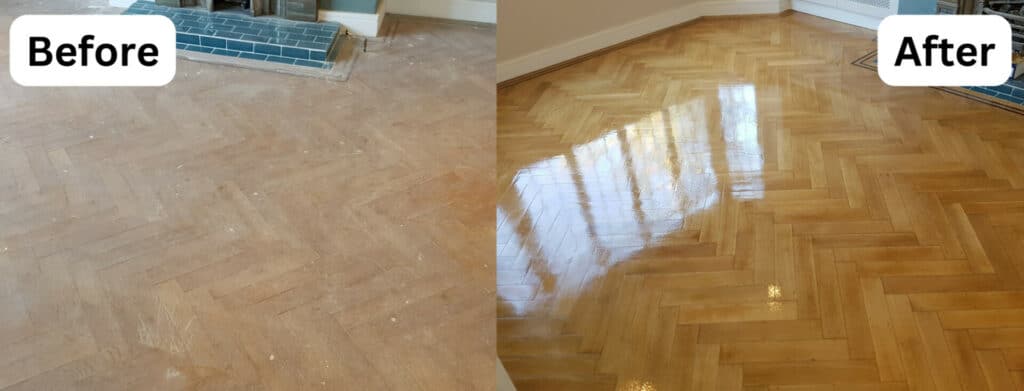
Maintaining and Caring for Your Buffing Machine
Proper maintenance of your buffing machine is essential to ensuring it operates efficiently and lasts for a long time. Regular care and attention to your equipment can help prevent breakdowns and extend its lifespan. Here are some tips for maintaining and caring for your buffing machine:
Cleaning After Use:
- After each use, turn off the buffing machine and unplug it from the power source.
- Clean the machine thoroughly, removing any dirt, dust, or residue from the body and handle.
- Wipe down the electrical cord to remove any dust or debris that may have accumulated.
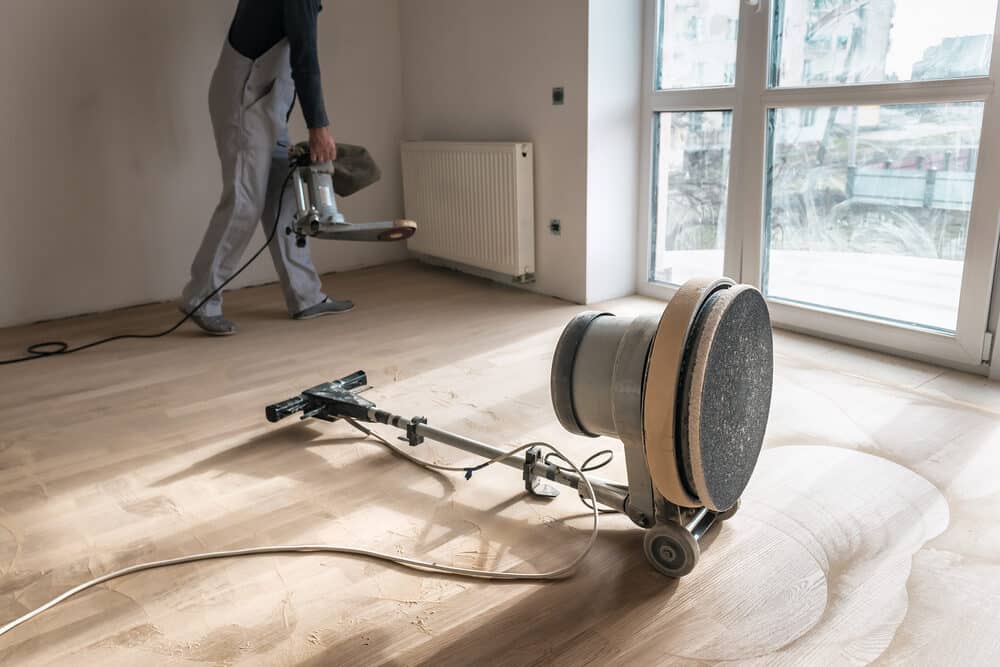
Inspect the buffing pad:
- Check the condition of the buffing pad. If it’s heavily soiled or damaged, replace it with a clean, suitable pad.
- Remove any debris or particles that may be stuck to the pad.
Lubricate moving parts:
- As the manufacturer advises, regularly lubricate the moving components of your buffing machine, such as the bearings and gears.
- Lubrication helps reduce friction and wear on these components.
Check for loose fasteners:
- Inspect the machine for loose screws, bolts, or fasteners. Tighten them if necessary to ensure the machine remains stable during operation.
Clean air vents:
- If your buffing machine has air vents, make sure they are free from dust and debris.
- Use compressed air or a brush to remove any buildup that can obstruct airflow and cause overheating.
Replace worn parts:
- Regularly inspect the power cord for signs of damage or wear. Replace it if you notice any exposed wires or fraying.
- If the buffing pad holder or other parts show significant wear, consider replacing them to maintain optimal performance.
Store Properly:
- When not in use, store your buffing machine in a clean, dry, and secure location.
- Keep the power cord wrapped neatly to prevent tangling and damage.
Regularly service and maintain mechanical components:
- Depending on the frequency of use and manufacturer recommendations, schedule periodic maintenance and servicing for the mechanical components of the machine. This can include motor inspections, belt replacements, and other mechanical adjustments.
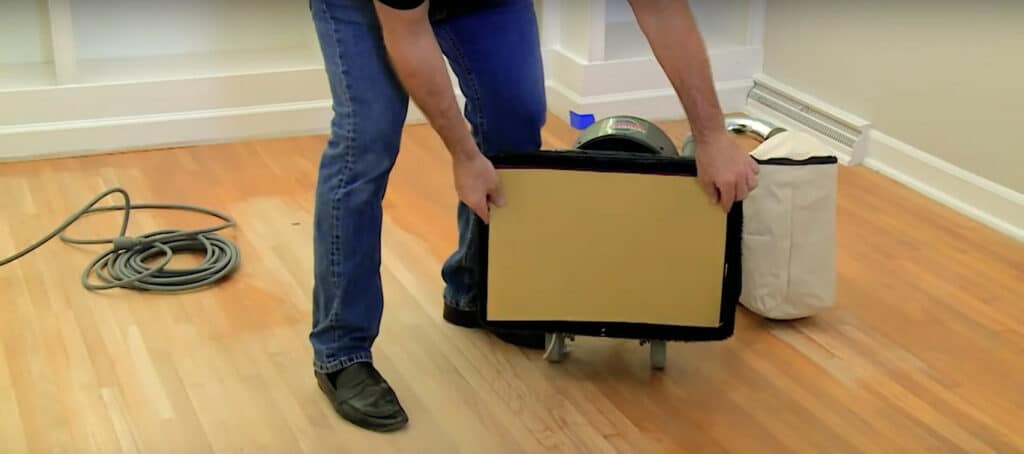
Follow the manufacturer’s guidelines:
- Always refer to the manufacturer’s user manual for specific maintenance instructions and recommended schedules.
- Adhere to any warranty requirements to ensure your machine remains covered.
Professional Maintenance:
- If you’re unsure about how to perform maintenance tasks or encounter any issues with your buffing machine, consider seeking professional maintenance or repair services from a qualified technician.
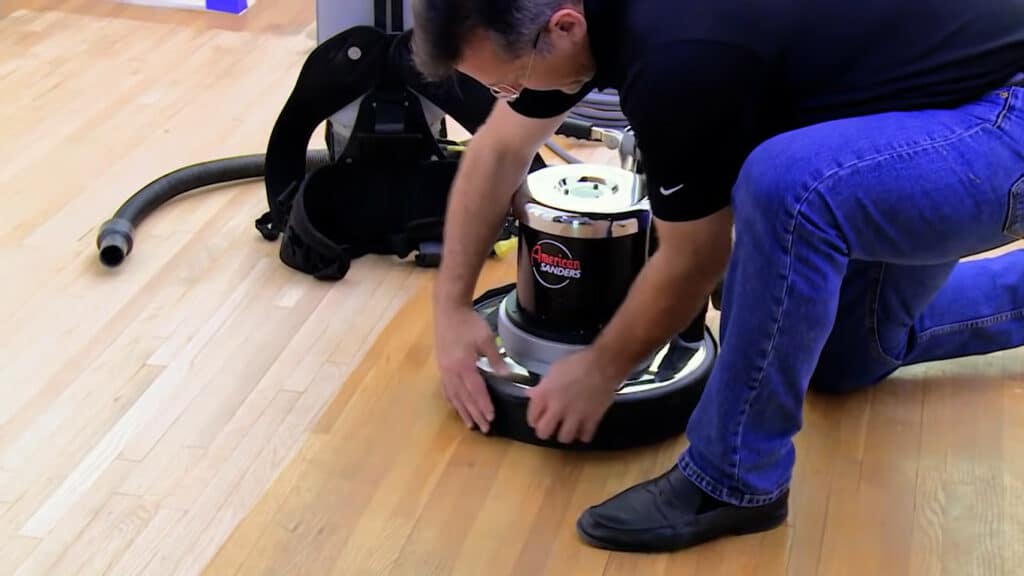
Conclusion
Buffing engineered wood flooring is a valuable and necessary maintenance task to keep your floors looking their best. Through this comprehensive guide, we’ve explored the essential techniques and tools required for successful buffing. Let’s recap the key takeaways and emphasise the importance of buffing for your engineered wood flooring:
- Buffing Significance: Buffing is not merely a cosmetic endeavour; it plays a vital role in prolonging the lifespan of your engineered wood flooring. It restores shine, removes minor imperfections, and enhances the overall appearance.
- Preparation: Proper preparation is the foundation of a successful buffing project. Clearing the room, gathering the right tools and materials, and inspecting the flooring surface are crucial steps to ensure a smooth process.
- Choosing the Right Equipment: Selecting the appropriate buffing machine and pads tailored to your specific needs and flooring condition is essential. Consider factors like machine type, size, speed settings, and pad materials.
- Safety Precautions: Prioritise safety at all times. Wear the necessary safety gear, create a safe work environment, and follow best practices to prevent accidents and health risks.
- Step-by-Step Buffing Process: Follow a systematic approach to buffing, starting with cleaning and progressing through buffing in small sections, maintaining a consistent pace, and conducting a final inspection for even results.
- Maintaining Your Buffing Machine: Regularly clean and inspect your buffing machine, replace worn parts, and follow manufacturer guidelines to ensure its longevity and optimal performance.
- Common Mistakes to Avoid: Be aware of common mistakes such as inadequate preparation, incorrect machine or pad selection, neglecting safety precautions, and not following manufacturer instructions.
In conclusion, buffing for engineered wood flooring is a rewarding endeavour that revitalises your floors and maintains their beauty. By adhering to the techniques and tools outlined in this guide, you’ll achieve stunning results while preserving the integrity of your engineered wood flooring. Regular buffing, along with proper care and maintenance, ensures that your floors remain a source of pride in your home for years to come.

Sanding
We provide virtually dust-free sanding with our continuous belt machinery with mobile extraction units, giving you a safer environment for your family.
Oiling
This organic finish not only adds beauty to your home but also has exceptional water-repellent characteristics, making it easier to clean and maintain.
Waxing
This natural floor finish offers the softest and most mellow appearance – and leaves your floor able to breath.
Buffing
Using soft buffing machines (and hand-polishing where required) will bring a wonderful sheen to your newly-finished floor.
Repairs
We offer a full assessment of your wooden floors to determine what repairs are needed to provide the perfect working surface for the later stages of sanding, staining and sealing.
Restoration
We offer a comprehensive restoration process designed to address floors that are improperly fitted or damaged over time through wear and tear.
Request a fixed price quote for your wood floor restoration now
Simply enter your postcode below to get started.
Services
Wood Floor Sanding Wood Floor Restoration Wood Floor Scratch Repair Squeaky Wood Floor Repair Parquet Floor Sanding Parquet Floor Restoration Commercial Floor Sanding Church Floor Sanding Community Centre Floor Sanding School Floor Sanding Gap Filling Gap Filling with ResinCopyright © Mr Sander®
Privacy & Cookies Terms & Conditions Complaints Procedure Cancellation Rights Sitemap